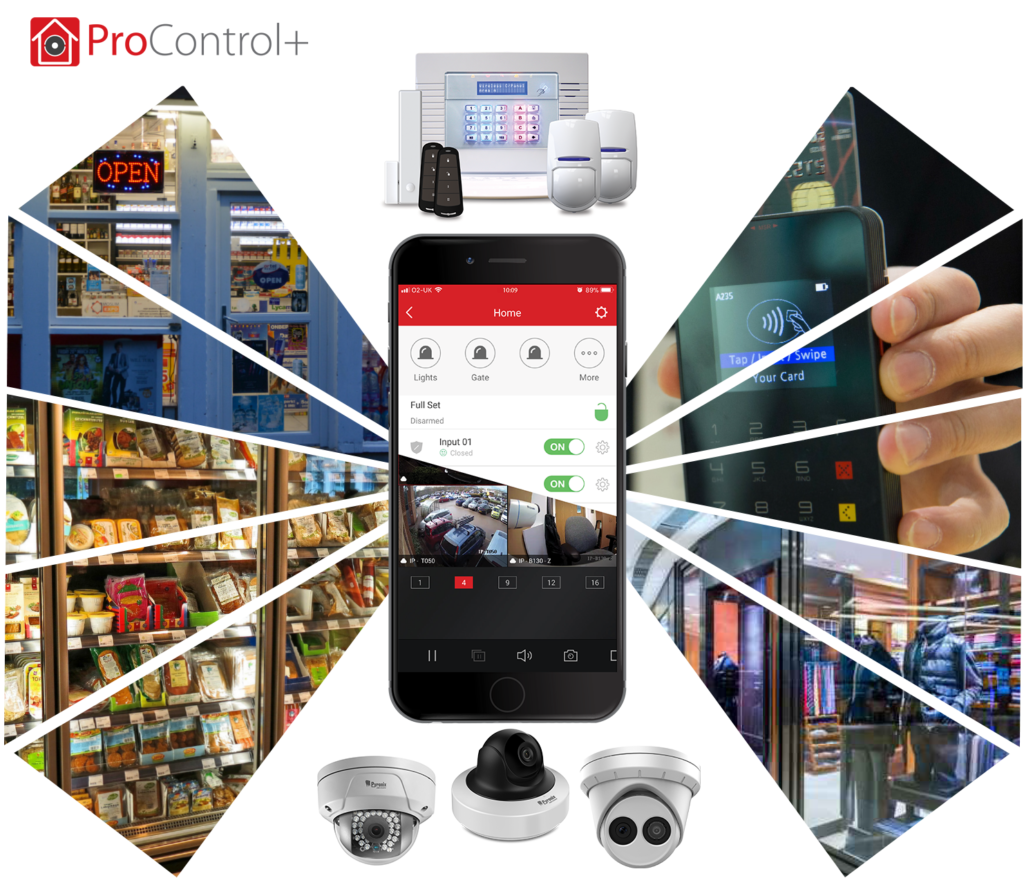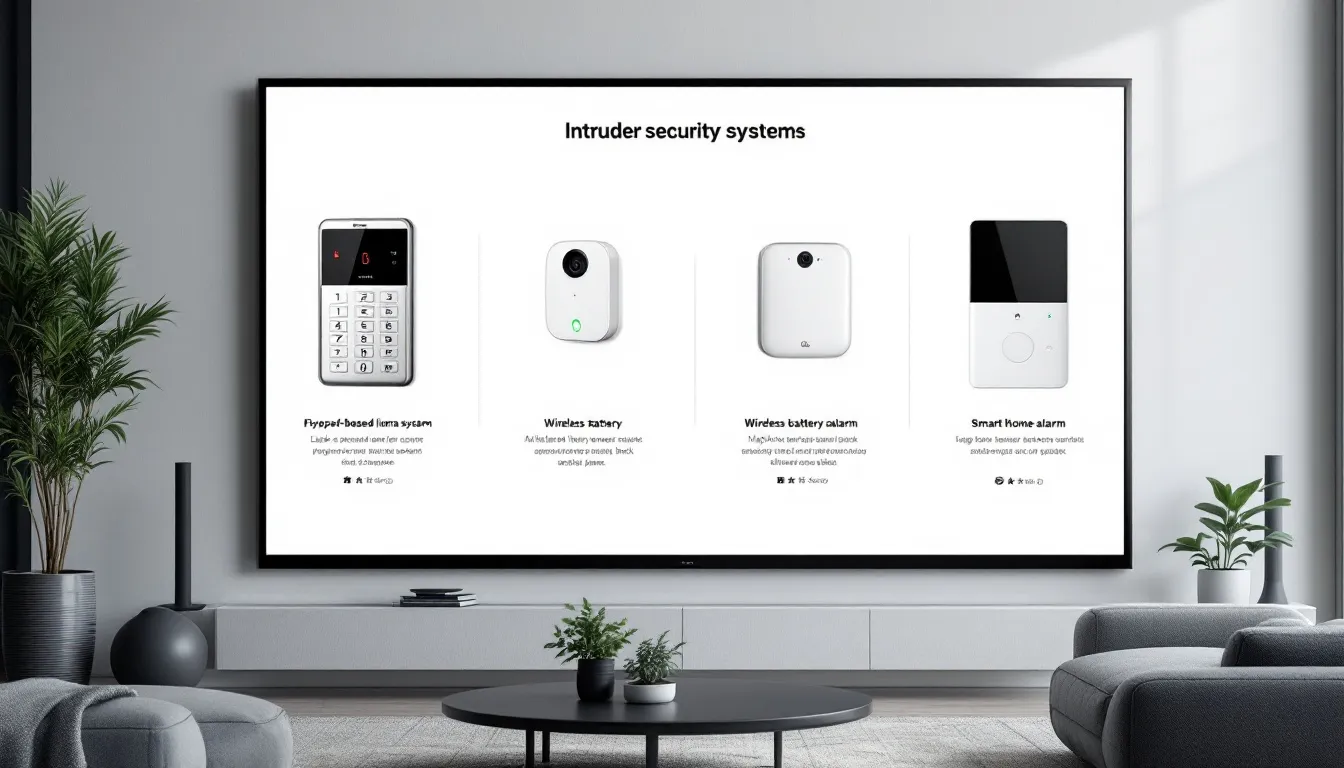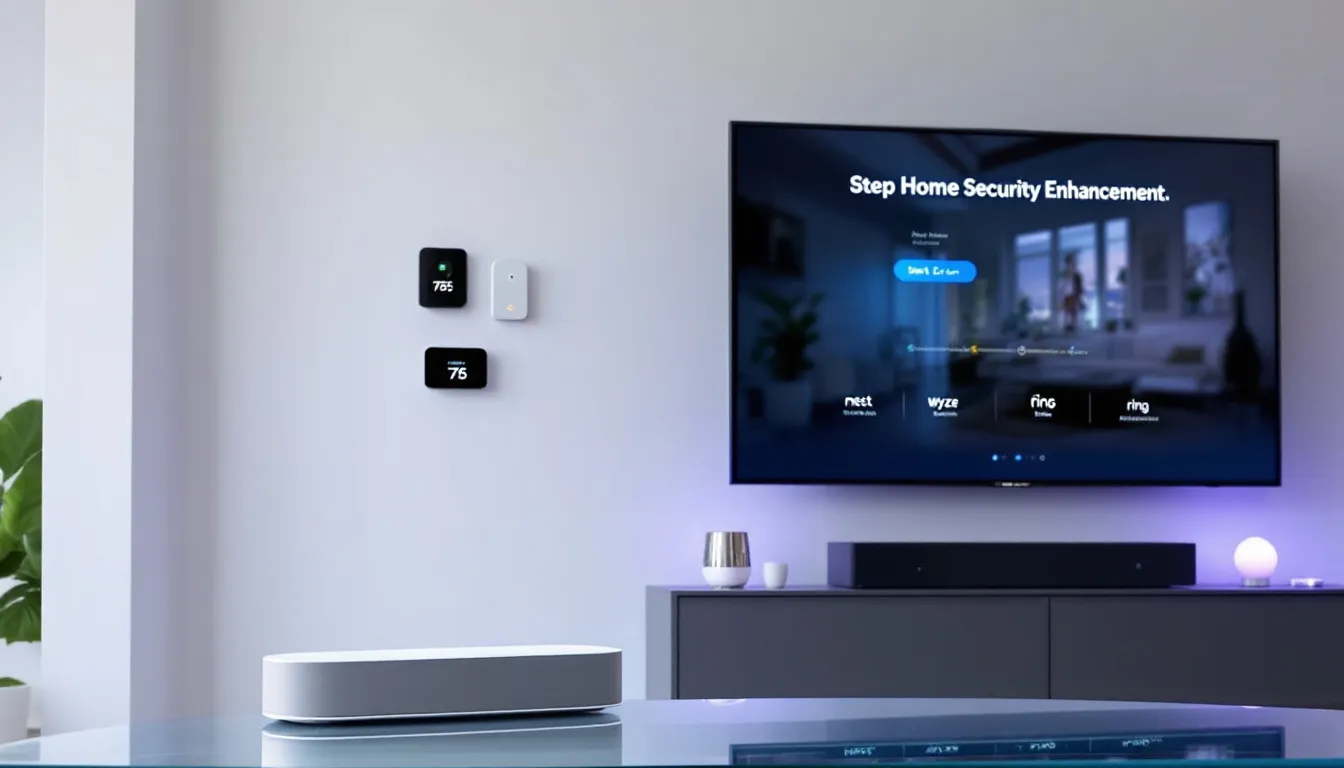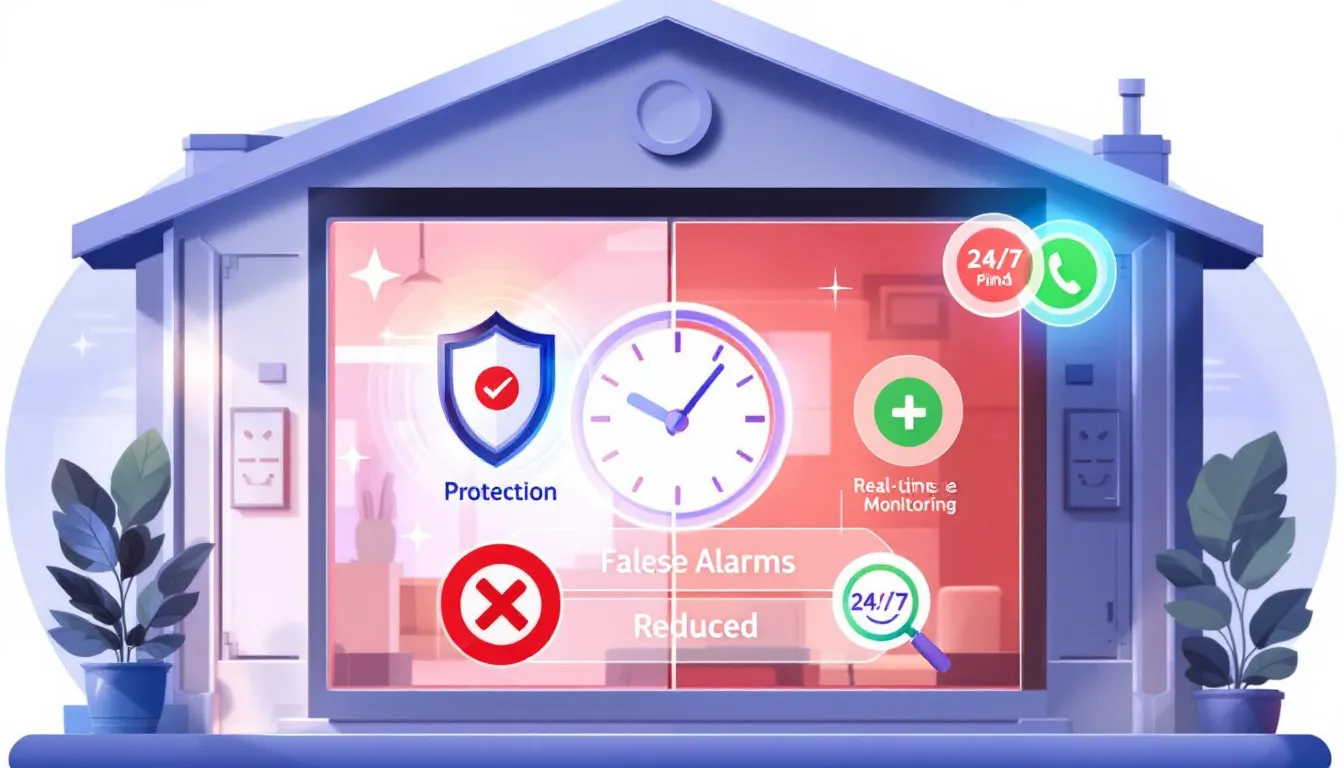Top Tips for Intruder Alarm Installation: Enhance Your Home Security Today
Thinking about an alarm system installation? Learn how to choose the best system for your home, properly prepare for installation, and whether to go DIY or hire a pro.
Introduction to Home Security
Home security is a top priority for many homeowners, and one of the most effective ways to protect your property is by installing a burglar alarm system. A burglar alarm system is designed to detect intruders and alert you and the authorities in the event of a break-in. With the rise of smart home technology, there are now many different types of alarm systems available, including wireless burglar alarms, monitored alarm systems, and smart alarms. Each type of system offers unique benefits, from the ease of installation and flexibility of wireless systems to the comprehensive protection provided by monitored alarms.
Installing a burglar alarm system not only deters potential intruders but also provides peace of mind, knowing that your home is protected. Modern home security systems can be customized to fit your specific needs, whether you require basic intrusion detection or advanced features like remote monitoring and smart home integration. By investing in a reliable alarm system, you can significantly enhance the security of your property and ensure the safety of your loved ones.
Key Takeaways
- Intruder alarm systems significantly enhance home security by acting as a deterrent to potential burglars and providing proactive alerts for swift responses to threats.
- Choosing between wired and wireless alarm systems depends on factors such as installation preferences, reliability needs, and ongoing maintenance costs, with professional installations offering tailored solutions and insurance benefits.
- Regular monitoring and maintenance of alarm systems, along with understanding emergency response procedures, are crucial for ensuring optimal functionality and minimizing risks during emergencies.
Why You Need an Intruder Alarm System

An intruder alarm system acts as a formidable deterrent to burglars, signaling that your home is protected by a robust security system. Prominently displayed alarm signs, along with smart cameras and sensors, make your property less appealing to potential intruders. The mere presence of a burglar alarm can prevent unauthorized access and significantly enhance your home’s security. Imagine the peace of mind that comes with knowing your family and valuables are safeguarded against threats.
A key component of this system is the bell box, which is highly visible and signals to intruders that the home is under professional surveillance and capable of swift response.
Beyond deterrence, alarm systems provide immediate responses to potential dangers, helping to prevent theft and vandalism. Proactive alerts notify homeowners of intrusions, allowing for swift preventive actions. This not only protects valuable assets but also enhances the occupants’ sense of security through the use of security devices.
With a home alarm system intruder alarm system, you can sleep soundly, knowing that your home security systems are well-protected and any potential threats can be addressed to detect intruders promptly. This system helps protect your home and ensures that you can detect intruders promptly with smart alarms, preventing any intrusion.
Choosing the Right Intruder Alarm System

Selecting the right burglar alarm system for your home can be daunting, but understanding the differences between wired and wireless systems can simplify the process. Wireless alarm systems offer a cleaner look and faster installation due to the absence of visible wiring. They are ideal for those who prefer minimal disruption during installation. However, it’s essential to consider the ongoing costs of battery maintenance for wireless systems, as sensors typically require battery replacements every couple of years.
While wireless systems provide flexibility and can operate without internet connectivity by relying on cellular data, wired alarm systems are often more reliable for consistent power supply. They may require more invasive installation procedures but offer long-term reliability and reduced connectivity issues. Security professionals can help you choose the right system based on your specific needs and property layout. Whether you opt for a DIY setup or a professionally installed system, ensuring it meets your requirements is crucial for optimal home security with wireless alarms. Additionally, having the system installed properly is essential to ensure its effectiveness and to maintain the validity of your home insurance.
When building your security system, you can either choose from pre-made systems or customize one to suit your preferences. Connecting your wireless alarm system to Wi-Fi can enhance its functionality, allowing for seamless integration with other smart home devices. Ultimately, the right choice depends on your unique security needs, budget, and the level of convenience you desire. An informed decision ensures your home is well-protected against potential intruders.
Understanding Wireless Burglar Alarms
Wireless burglar alarms are a popular choice for homeowners due to their ease of installation and flexibility. These systems use wireless sensors and devices to detect intruders and alert you and the authorities. Unlike traditional wired systems, wireless burglar alarms do not require extensive wiring, making them easier and quicker to install. This makes them an ideal option for both new installations and retrofitting existing properties.
One of the key benefits of wireless burglar alarms is their scalability. As your security needs change, you can easily expand or upgrade your system by adding new sensors or devices. This flexibility allows you to customize your security setup to provide optimal protection for your home. Additionally, wireless systems are often more affordable than their wired counterparts, making them an attractive option for budget-conscious homeowners.
Whether you choose to have your wireless burglar alarm installed by a security professional or opt for a DIY approach, these systems offer a reliable and effective way to protect your property. With advancements in technology, wireless burglar alarms now offer features such as remote monitoring, smart home integration, and real-time alerts, ensuring that you are always informed and in control of your home security.
Preparing for Installation
Proper preparation is crucial before starting the installation process of your wireless burglar alarm system. Start by planning the installation to save time and minimize the risk of reordering components. Check all your components before beginning to ensure that everything is in order. If you find any missing or damaged parts, please reach out to customer support. They will assist you with the issue. Thoroughly reading the instruction manual helps you understand how to install the system correctly.
When deciding on the placement of the keypad and sirens, consider convenience and effectiveness. The keypad should be installed close to the front door for easy access, while the wireless siren should be placed near the front door to effectively deter intruders. For larger properties, a wired system might be more suitable due to its superior reliability and reduced connectivity issues.
Proper planning and preparation ensure a smoother alarm installation process and optimal performance of your alarm system.
Professional vs. DIY Installation
Choosing between professional burglar alarm installation and a DIY approach for your burglar alarm system depends on various factors, including your budget, technical skills, and the complexity of your security needs. Professional installers conduct thorough property surveys to tailor the system to your specific requirements. One significant advantage of professional installation is the guarantee of maintenance and 24-hour emergency response, ensuring your system remains reliable. If you prefer a DIY approach, you might consider how to install a burglar alarm effectively. Professionally installed systems also often meet insurance requirements, providing trustworthy security.
On the other hand, DIY installations can be cost-effective but come with risks. Here are some potential drawbacks to consider:
- Without proper expertise, there’s a higher chance of malfunctions and security vulnerabilities.
- DIY systems may not perform as expected, potentially leading to invalidated home insurance policies.
- Self-installed systems place the responsibility of fixing breakdowns on the homeowner, which can be challenging without expert knowledge.
- While DIY installations offer flexibility, they may lack the capabilities and services provided by professional systems.
Professional installations, offered by top alarm companies and security companies, can manage more complex processes and ensure all components work together effectively. They can minimize security risks and provide comprehensive protection. Additionally, professional installations often come with warranties, ensuring proper installation and helping qualify for insurance discounts.
Ultimately, the choice between a security professional and DIY installation should be based on your specific needs and the level of security you desire for your home.
Step-by-Step Guide to Installing a Wireless Intruder Alarm

Installing a wireless intruder alarm system can be a straightforward process if you follow the right steps. Start by creating a layout plan to determine the best locations for components like sensors and the main panel. Adhering to a well-thought-out plan ensures optimal coverage and functionality of your alarm system. This guide will walk you through selecting the main control panel location, installing motion sensors and door/window sensors, and setting up the alarm system.
By following these detailed steps, you can ensure that your wireless burglar alarm system is installed correctly and provides maximum security for your home. Whether you’re a DIY enthusiast or prefer professional assistance, understanding the installation process is crucial for achieving the best results.
Selecting the Main Control Panel Location
Choosing the right location for the main control panel is crucial for ensuring ease of access and connectivity. The control panel should be installed in an easily accessible area where you can quickly interact with it. It’s essential to place the control panel close to a power source and communication lines to ensure reliable connectivity and functionality.
Consider both accessibility and security when selecting the location for the main alarm panel. A well-placed control panel can significantly enhance the efficiency of your alarm system, allowing for quick responses in case of an emergency.
Installing Motion Sensors and Door/Window Sensors
Installing motion sensors and door/window sensors requires careful consideration to ensure optimal performance. Before starting the installation process, make sure all devices are charged and ready for pairing. Positioning the sensors correctly is crucial for effective monitoring. Motion detectors should be mounted in the upper corners of rooms to effectively detect movement. Additionally, it is important to place sensors at entry points such as doors to ensure comprehensive coverage and minimize the risk of undetected intrusions.
Avoid placing motion sensors near heaters, air conditioners, or other electronics to prevent false alarms. Choose motion sensors with features that can recognize the unique heat signatures of humans and animals to reduce false alarms. Proper placement and selection of sensors ensure your alarm system functions effectively in detecting intrusions and is capable of being detected.
Setting Up the Alarm System
Setting up your alarm system involves connecting each device and testing their functionality. The SimpliSafe app walks you through the installation process, allowing you to program the system effectively. Connect the Base Station to the app by scanning the QR code or entering the serial number. The Keypad is essential for arming and disarming the system, with three main settings: Away, Home, and Off.
Testing the system is a crucial step to ensure all components are working correctly. Select ‘Test Mode’ on the Keypad menu to test each device for proper signal detection and functionality. Walk in front of the Motion Sensor to check if it detects movement accurately. If the sensor detects properly, the Base Station will announce the sensor type. Press the test button to confirm the setup.
Ensure that all wireless devices operate on a 2.4 GHz network for proper connectivity. Proper connection to Wi-Fi increases the speed and security of the system.
Connecting to Wi-Fi
Connecting your wireless burglar alarm system to Wi-Fi can provide an additional layer of security and convenience. Many modern alarm systems can be controlled and monitored remotely through a smartphone app, allowing you to receive alerts and notifications if an intruder is detected. This remote access ensures that you can keep an eye on your property even when you are away from home.
To connect your wireless burglar alarm system to Wi-Fi, follow these steps:
- Ensure that your alarm system is compatible with your home Wi-Fi network.
- Download the corresponding app for your alarm system on your smartphone or tablet.
- Follow the app’s instructions to connect the alarm system to your Wi-Fi network. This usually involves scanning a QR code or entering a serial number.
- Once connected, test the system to ensure that it is communicating properly with the monitoring centre and that you are receiving alerts on your device.
Connecting to Wi-Fi can also provide faster and more reliable communication between the alarm system and the monitoring centre, ensuring that help arrives quickly in the event of an emergency. By leveraging the power of Wi-Fi, you can enhance the functionality and reliability of your wireless burglar alarm system.
Integrating Your Intruder Alarm with Smart Home Devices

Integrating your intruder alarm system with smart home devices can significantly enhance your home security. Many modern alarm systems allow for integration with smart locks and cameras, providing a comprehensive security solution. An integrated home security system offers comprehensive protection by combining various safety devices like smoke detectors and temperature sensors. Smart home platforms like Google Home and Alexa can control alarm systems, offering seamless integration and ease of use. Imagine commanding your alarm system with a simple voice command or automating your security routines to simplify management.
Devices connected through Z-wave technology enable different smart products to communicate and automate actions. Integrating your alarm system with other security measures enhances overall protection, ensuring your home is well-guarded against potential intruders. By leveraging smart home technology, you can create a more secure and convenient living environment.
Monitoring and Maintenance
Regular monitoring and maintenance of your alarm system are essential to ensure its optimal performance. Testing your alarm system after installation confirms that all components function as intended and helps identify any issues early. Regular testing, recommended on a monthly basis, ensures that all sensors and devices are working correctly.
Security experts play a critical role in maintaining your system, ensuring that it performs optimally and responds effectively to emergencies. Keeping sensors and indoor cameras clean is vital for their proper functioning, as dust and debris can impair their performance. Annual professional inspections can help identify potential issues and ensure your alarm system is functioning optimally. Regular maintenance not only enhances the reliability of your security system but may also help in securing insurance discounts with advanced sensors.
Troubleshooting Common Issues
Troubleshooting common issues with your burglar alarm system can help to ensure that it is working properly and providing the best possible protection for your home. Some common issues that may arise include false alarms, faulty sensors, and connectivity problems. Addressing these issues promptly can prevent potential security breaches and ensure that your system operates smoothly.
False alarms can be caused by a variety of factors, such as pets, drafts, or faulty sensors. To reduce the occurrence of false alarms, ensure that motion sensors are placed in appropriate locations and are not obstructed by furniture or other objects. Regularly check and clean sensors to remove dust and debris that may interfere with their operation.
Faulty sensors can compromise the effectiveness of your alarm system. If a sensor is not working correctly, it may need to be recalibrated or replaced. Refer to the manufacturer’s instructions for troubleshooting steps or contact customer support for assistance.
Connectivity problems can occur if your wireless alarm system is not properly connected to your Wi-Fi network. Ensure that your system is within range of your Wi-Fi router and that there are no obstructions or interference affecting the signal. Regularly test your system to ensure that all components are communicating effectively.
Regular maintenance and testing are crucial to prevent issues from arising in the first place. Schedule routine checks and follow the manufacturer’s guidelines for maintaining your alarm system. By staying proactive, you can ensure that your burglar alarm system remains reliable and effective in protecting your home.
Emergency Response Procedures
In the event of an emergency, the Alarm Receiving Centre plays a crucial role in contacting the appropriate authorities. If a crime is observed in progress, the police respond immediately by the system. It is essential that security companies are registered with the local police force to ensure alarms are taken seriously and responded to appropriately. In case of a fire hazard, the system alerts the fire brigade, and for medical emergencies, the system notifies ambulance services. This swift alert response ensures that help arrives promptly, minimizing potential damage and injury.
Updating your contact information with the alarm company is crucial for effective emergency alerts and communication. Ensuring that your details are current allows for immediately contact during emergencies, enhancing the overall efficiency of the response procedures, which alerted the team to act swiftly, alerting them to the situation.
Cost Considerations
When considering the installation of a wireless alarm system, it’s essential to factor in the costs. Professional installation for a wireless alarm system starts at £125, while DIY installation incurs no extra cost. However, professional installation can lead to lower insurance premiums, as businesses with monitored systems often qualify for more significant reductions.
Insurance companies often offer lower premiums for properties equipped with burglar alarms, reflecting a reduced risk of break ins. Additionally, having monitored burglar alarms can further enhance these cost benefits by providing continuous surveillance and immediate response, which insurers view favorably. Professionally installed alarm systems come with warranties that ensure proper installation, which can also help in qualifying for insurance discounts.
Weighing these cost considerations can help you make an informed decision that balances upfront expenses with long-term savings.
Benefits of a Monitored Alarm System

A monitored alarm system offers numerous benefits that enhance home security and provide peace of mind. One of the primary advantages is the 24/7 monitoring services that come with professional installations. These systems facilitate quick alerts to authorities upon activation, significantly reducing response times during emergencies. Professional monitoring sends alerts to a monitoring center, ensuring any threats are addressed promptly. Additionally, monitored systems ensure a quick police response, provided they comply with regulations and are installed by approved installers.
Investing in a monitored burglar alarm can also lead to substantial savings on home insurance premiums. Homeowners might save up to £200 annually, with some insurance companies offering discounts ranging from 5% to 20% for homes equipped with monitored alarm systems.
Monitored systems provide around-the-clock surveillance and scalability as your security needs evolve. The combination of enhanced security and financial benefits makes monitored alarm systems and security systems a valuable investment for any homeowner.
Upgrading Your System
Upgrading your burglar alarm system can provide additional features and benefits, such as improved sensors, enhanced monitoring capabilities, and increased convenience. There are many different options available for upgrading your system, including adding new sensors, installing a smart alarm panel, and integrating your system with other smart home devices.
Adding new sensors can enhance the coverage of your alarm system, ensuring that all entry points and vulnerable areas are protected. Consider upgrading to advanced sensors that offer better detection capabilities and reduced false alarms. Installing a smart alarm panel can provide a more user-friendly interface and allow for easier control and monitoring of your system.
Integrating your burglar alarm system with other smart home devices can create a more comprehensive security solution. For example, connecting your alarm system to smart locks, cameras, and lighting can provide additional layers of protection and convenience. Smart home integration allows you to control and monitor your security system from a single app, streamlining the management of your home security.
Upgrading your system can also improve the overall reliability and performance of your alarm system. Newer components and technologies often offer better functionality and durability, ensuring that your home remains protected. By investing in upgrades, you can enhance the security of your property and enjoy greater peace of mind.
By following these guidelines, the new sections will seamlessly integrate into the existing article, providing comprehensive information on intruder alarm installation and home security.
Summary
In summary, installing an intruder alarm system is a crucial step in enhancing your home security. Burglar alarms serve as effective deterrents, provide immediate responses to potential threats, and offer peace of mind. Choosing the right system, whether wired or wireless, and opting for professional or DIY installation, requires careful consideration of your specific needs and budget. Proper preparation and understanding of the installation process ensure optimal performance and reliability of your alarm system.
By integrating your alarm system with smart home devices and maintaining regular monitoring and maintenance, you can further enhance your home’s security. The benefits of a monitored alarm system, including 24/7 surveillance and potential insurance savings, make it a worthwhile investment. Embrace these security measures to protect your home and loved ones, ensuring a safe and secure living environment.
Frequently Asked Questions
Why should I install an intruder alarm system?
Installing a security alarm system significantly enhances your home’s security by deterring potential burglars and ensuring immediate responses to threats. Ultimately, it provides peace of mind for you and your family.
What are the differences between wireless and wired alarm systems?
Wireless alarm systems provide a neater appearance and enable quicker installation, whereas wired systems are generally more reliable due to a stable power supply and are suited for long-term use. It is crucial to secure all potential entry points, including doors and windows, to ensure comprehensive home security. The choice ultimately depends on your specific needs and preferences.
Should I opt for professional or DIY installation?
Opting for professional installation is advisable as it provides reliability, maintenance guarantees, and insurance benefits, whereas DIY installation may save costs but often lacks the necessary expertise.
How can I integrate my alarm system with smart home devices?
To effectively integrate your alarm system with smart home devices, connect it with smart locks, cameras, and compatible home platforms like Google Home or Alexa. This enhances both security and convenience, allowing for streamlined control of your home environment.
What are the benefits of a monitored alarm system?
A monitored alarm system ensures 24/7 surveillance and rapid alerts to authorities, enhancing security and potentially lowering home insurance premiums. Investing in such a system significantly increases your protection and peace of mind.
Sorry, the comment form is closed at this time.
